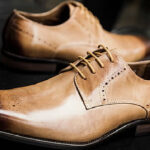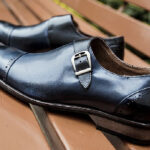Are you always finding yourself having to clean sticky messes off your shoes? Don’t worry; you are not alone. Whether it’s gooey gum stuck on the bottom of a sneaker or glue dripping from the side of a shoe, getting rid of sticky residue can be tricky business.
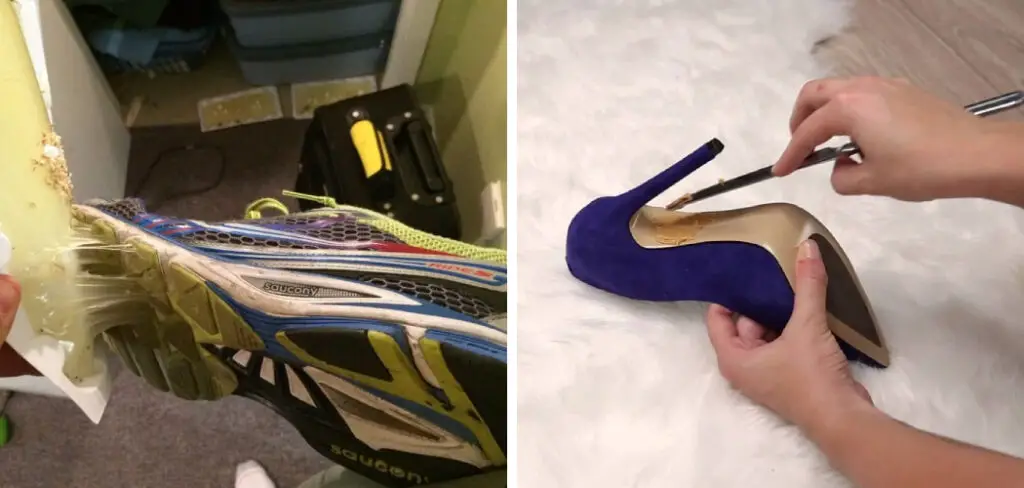
In this blog post, we will provide helpful tips for how to get sticky residue off shoes. With our easy-to-follow tutorials and guides, once those pesky gobs have been dealt with, you’ll never have to worry again!
Why Do Shoes Get Sticky?
There are a few different reasons why shoes can become sticky. Walking through wet grass or puddles often leaves a residue of mud and other dirt particles that can harden when it dries, leaving your footwear feeling tacky.
If you’re dealing with gum stuck on the bottom of a sneaker, it’s likely that it was stepped in or a piece of gum was thrown onto the shoe. Glue drips and spills on the sides of shoes are usually caused by repairs made by cobblers or shoemakers. If you’re dealing with an unknown sticky residue, it could be anything from spilled food or drink to a small oil leak.
9 Methods How to Get Sticky Residue off Shoes
1. Use Vinegar
Vinegar is a household staple that can be used for cleaning a variety of surfaces, including your shoes. To remove sticky residue from your shoes, simply soak a cloth in vinegar and use it to wipe down the affected area. You may need to let the vinegar sit on the residue for a few minutes.
For tougher stains, you can combine vinegar and baking soda to make a paste that you can apply to the stain. When finished, rinse off the shoes with water and let them air dry. If the smell of vinegar is too strong for your preference, you can add a few drops of essential oil to the mixture.
2. Use Baking Soda
Baking soda is another common household item that can be used to remove sticky residue from your shoes. To use baking soda, simply make a paste with water and baking soda and apply it to the affected area. Let the paste sit for a few minutes with a damp cloth. If necessary, use an old toothbrush to scrub away any remaining residue. After the area is free from sticky residue, rinse off the baking soda with water and let your shoe air dry. Baking soda is a great natural and non-toxic way to remove stubborn residue from your shoes.
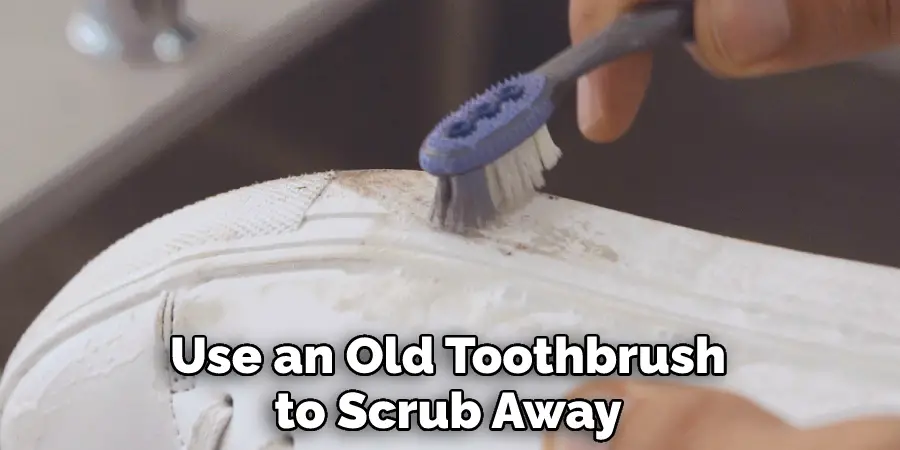
3. Use Lemon Juice
Lemon juice is another natural cleaner that can be used to remove sticky residue from your shoes. Apply some lemon juice to the affected area. You can also add lemon juice to a bowl of warm water and soak your shoes in the mixture for 10 minutes before wiping them down. Though it is an effective cleaner, it can be a bit smelly, so make sure you open windows or turn on a fan while using it. However, the smell won’t last; it will dissipate quickly.
4. Use Rubbing Alcohol
Rubbing alcohol is another effective cleaner for removing sticky residue from your shoes.
You can add rubbing alcohol to a bowl of warm water and soak your shoes in the mixture for 10 minutes before wiping them down. While the rubbing alcohol won’t damage your shoes, it’s important to make sure you don’t use this method on suede or nubuck materials, as it can cause discoloration. If you’re cleaning shoes with leather uppers, go ahead and use rubbing alcohol for the best results.
5. Use Nail Polish Remover
Nail polish remover can also be used to remove sticky residue from your shoes. Simply apply nail polish remover to the affected area. Be sure to follow the instructions on the nail polish remover bottle, as some may be too harsh for use on leather or synthetic materials. If you don’t have a nail polish remover, rubbing alcohol or white vinegar can also be used to remove sticky residue. Once the residue has been removed, use a leather conditioner or shoe polish to restore the color and finish of your shoes.
6. Use WD-40
WD-40 is a multi-purpose lubricant that you can use to remove sticky residue from shoes. Simply spray WD-40 onto the affected area and wipe it away with a clean cloth. You can also use WD-40 to remove dirt and grime from the surface of your shoes; just spray it on, let it sit for a few minutes, and wipe it off with a cloth. You can also use WD-40 to waterproof your shoes by spraying them evenly and then letting them dry. This will help protect them from the elements, keeping them looking like new ones for longer.
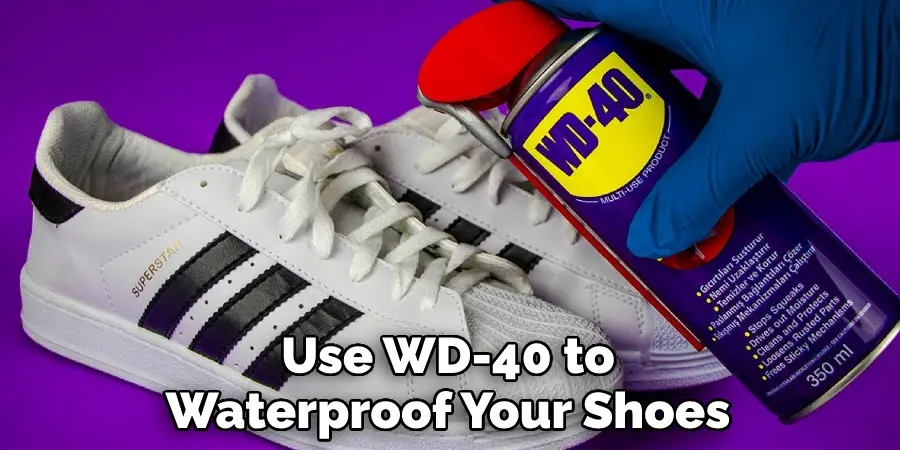
7. Apply a Shoe Protector
If you want to give your shoes a longer life, then using a shoe protector is a great way to do it. A good quality shoe protector will create an invisible barrier around your shoes, keeping out dirt, water, and stains. It will also help to retain the color of the shoe material and keep it looking fresh and new. Be sure to read the directions carefully and apply the product accordingly to ensure your shoes stay looking great for as long as possible!
8. Use Olive Oil
Olive oil is another household item to remove sticky residue from shoes. Simply apply olive oil to the affected area with a clean cloth and let it sit for 5-10 minutes before wiping it away. It is important to ensure that the area is completely dry before you move on to the next step. This method can take several repetitions in order to get the desired result. Additionally, olive oil can be used as a preventative measure to keep materials from sticking in the future.
Simply apply a thin layer of olive oil to the shoe’s surface and allow it to dry for a few hours before wearing them. This will create an invisible barrier that won’t attract dirt or dust and helps prevent adhesive build-up. Olive oil can also be used to remove sticky residue from other surfaces, such as vinyl and leather. It’s a great natural alternative to harsh chemical cleaners.
9. Use Soap and Water
Soap and water are excellent ways to remove sticky residue from shoes without any harsh chemicals that could damage the material. Simply mix a little dish soap with warm water and use a damp cloth to wipe away the residue. This method is effective against most everyday dirt and grime but may not be as successful when faced with more stubborn materials like tar or gum. Soap and water can also be used as preventative measures to help keep shoes clean and residue-free.
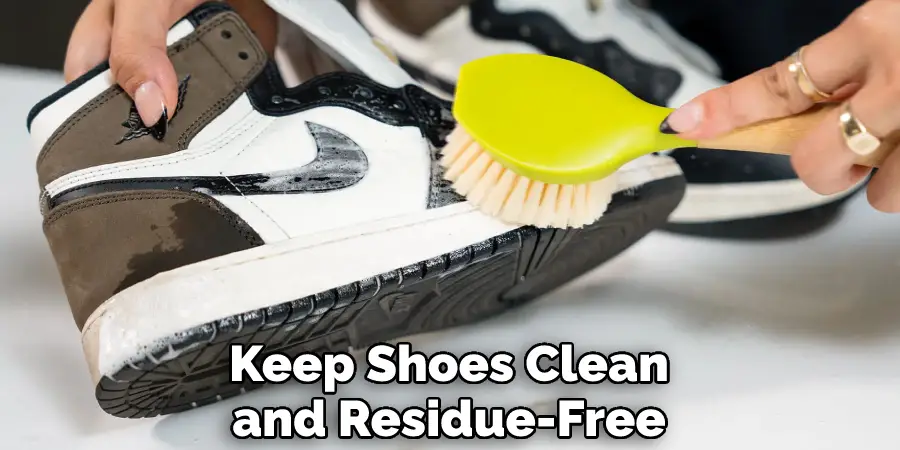
By following these steps, you can keep your shoes looking like new and free of sticky residue. With a little bit of effort and the right cleaning techniques, your shoes will stay looking great for years to come!
Things to Consider When Getting Sticky Residue Out of Shoe
1. Identify the Type of Residue:
Sticky residue can come from a variety of sources, such as glue, gum, and other adhesives that may have been used to repair shoes. It is important to identify what you are dealing with before proceeding. Different types of residue require different approaches for removal.
2. Test Cleaning Solutions on a Small, Unnoticeable Area:
Before attempting to remove sticky residue from the entire shoe, it is important to test any cleaning solutions or methods in a small, unnoticeable area first. This will help you determine if the method or solution will work without causing any damage to the shoe.
3. Consider Softening the Residue Before Removing It:
Softening the residue will make it easier and safer to remove from shoes. You can do this by using a chemical solvent or warm water – whichever is more appropriate, depending on the type of residue you are dealing with.
Conclusion
If your shoes are covered in sticky residue, there’s no need to worry. There are a few easy ways to get the gunk off without damaging your shoes. With a little elbow grease and the right tools, you can have your shoes looking good as new in no time.
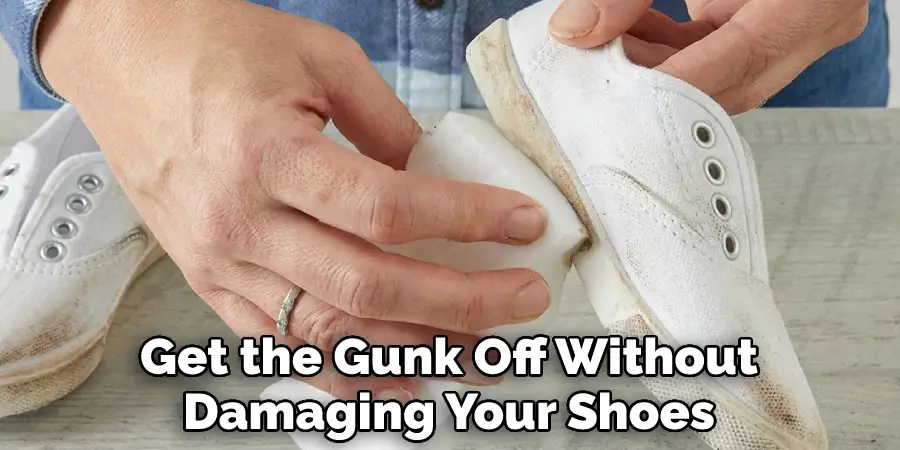
So next time your shoes get sticky, don’t panic – just follow these simple instructions on how to get sticky residue off shoes, and they’ll be back to normal before you know it. And remember, prevention is always the best cure for sticky situations–so be sure to keep your shoes clean and dry to avoid future problems.



